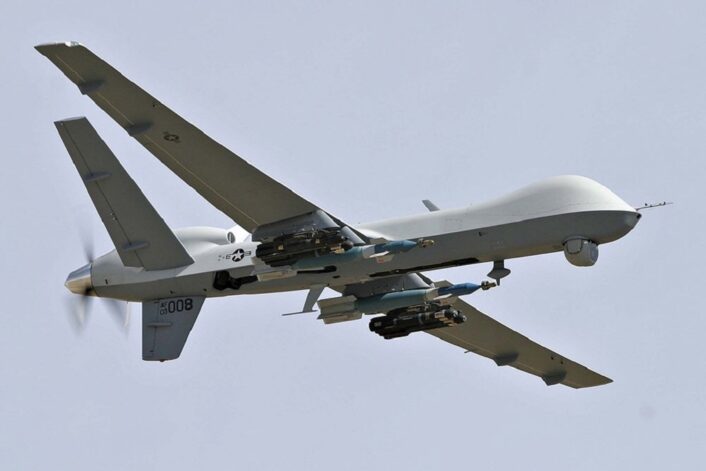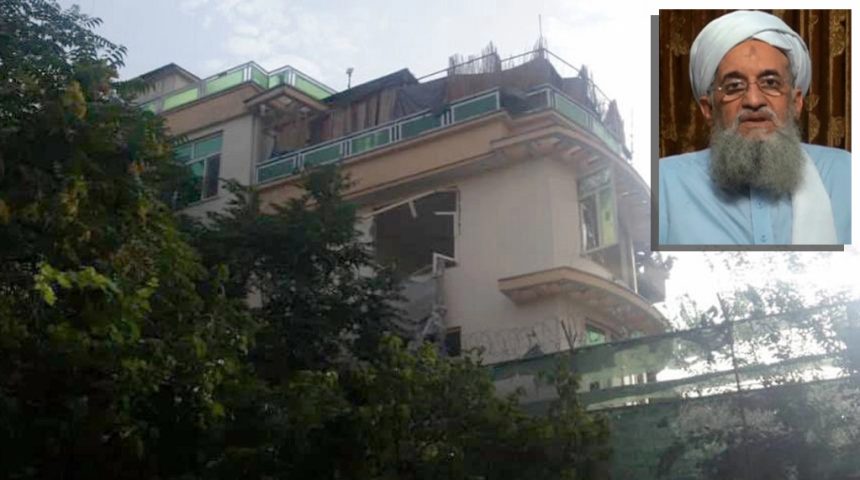The precision strike was the culmination of a CIA counterterrorism operation and may have seen the involvement of the “Ninja” Hellfire R9X.
United States president Joe Biden announced on August 1, 2022, that one of the world’s most-wanted terrorists, Ayman al-Zawahiri, the leader of al-Qaeda which oversaw the attacks of September 11, 2001, alongside Osama bin Laden, has been killed during a counterterrorist operation. This was the first operation of this kind in Afghanistan since the withdrawal from the country last year.
“Now justice has been delivered, and this terrorist leader is no more,” Biden said in a speech from the White House on Monday. “No matter how long it takes, no matter where you hide, if you are a threat to our people, the United States will find you and take you out.”
The strike occurred at 9:48 p.m. Eastern time on Saturday July 30, according to a senior administration official who briefed reporters on the operation. A drone, possibly an MQ-9 Reaper, fired two AGM-114 Hellfire missiles at Zawahiri as he stepped onto the balcony of a safe house in the Shirpur neighborhood in Kabul, where he had been living with members of his family, the official said.
Intelligence agencies have concluded that Zawahiri was the only person killed in the strike and the other occupants of the building were unharmed. The intelligence community had tracked Zawahiri to the safe house and spent months confirming his identity and developing a “pattern of life,” tracking his movements and behavior, the official said to reporters, studying how a strike could be carried out in such a way that it lessened the chances of killing any other occupants or civilians.
“After relentlessly seeking Zawahiri for years under Presidents Bush. Obama and Trump, our intelligence community located Zawahiri earlier this year,” Biden said during his speech. “He had moved to downtown Kabul to reunite with members of his immediate family. After carefully considering the clear and convincing evidence of his location, I authorized a precision strike to remove him from the battlefield once and for all.

The few photos available of the building seem to show no sign of explosion, but only a couple of windows blown out. The absence of any signs of burning or explosion might point to the use of the deadly “Ninja” Hellfire R9X, which has its explosive warhead replaced by six folding blades that pop out before the missile impacts the target. The New York Post explicitly mentions the use of the Hellfire R9X in the strike against al-Zawahiri, but does not cite the source of this info.
According to the officials, Senior Haqqani Taliban figures were aware of al-Zawahiri’s presence in the area in “clear violation of the Doha agreement,” and even took steps to conceal his presence after Saturday’s successful strike, restricting access to the safe house and rapidly relocating members of his family, including his daughter and her children.
In fact, the Taliban quickly denied al-Zawahiri’s presence: “There were no casualties as the house was empty,” said Abdul Nafi Takor, spokesperson of the interior ministry. Taliban representatives visited the house in the hours after the strike and photos from BBC show that the house has now been covered by green tarps to hide the damage.
Also, the Taliban were quick to condemn the attack, as Taliban spokesman Zabiullah Mujahid said: “An air strike was carried out on a residential house in Sherpur area of Kabul city on July 31. The nature of the incident was not apparent at first, but initial findings determined that the strike was carried out by an American drone.” He then added that the Islamic Emirate of Afghanistan “strongly condemns this attack on any pretext and calls it a clear violation of international principles and the Doha Agreement.”









